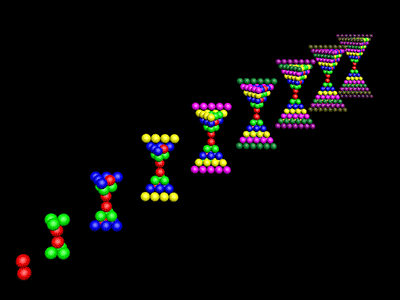In nuclear physics, a magic number is a number of nucleons (either protons or neutrons, separately) such that they are arranged into complete shells within the atomic nucleus. The seven most widely recognized magic numbers as of 2007 are 2, 8, 20, 28, 50, 82, and 126 (sequence A018226 in the OEIS).

Magic Numbers: 2, 8, 20, 28, 50, 82, 126, 184, 258 … Nuclear subshells s, p, d, f, … are grouped together in modules of individual colour: s – red; p – green; d – dark blue; f – yellow… et cetera.
The lowest values 2, 8, and 20 agree with independent nucleon motion into a single particle potential, like a harmonic oscillator.
MNm= (m3 + 3m2 + 2m)/3
m = 1, 2, 3.
The figures for numbers 28, 50, 82, and 126 agree, in addition to the central potential, with a strong spin-orbit coupling (by Maria Mayer and Jensen) have the another form.
They are featured by the formula:
MNm= (m3 + 5m)/3
m = 4, 5, 6, 7, …
The combined formula is:
MNm= 0(m^2 – 5m + 6) * (m2 – m) + (m3 + 5m)/3
m = 1, 2, 3, …
